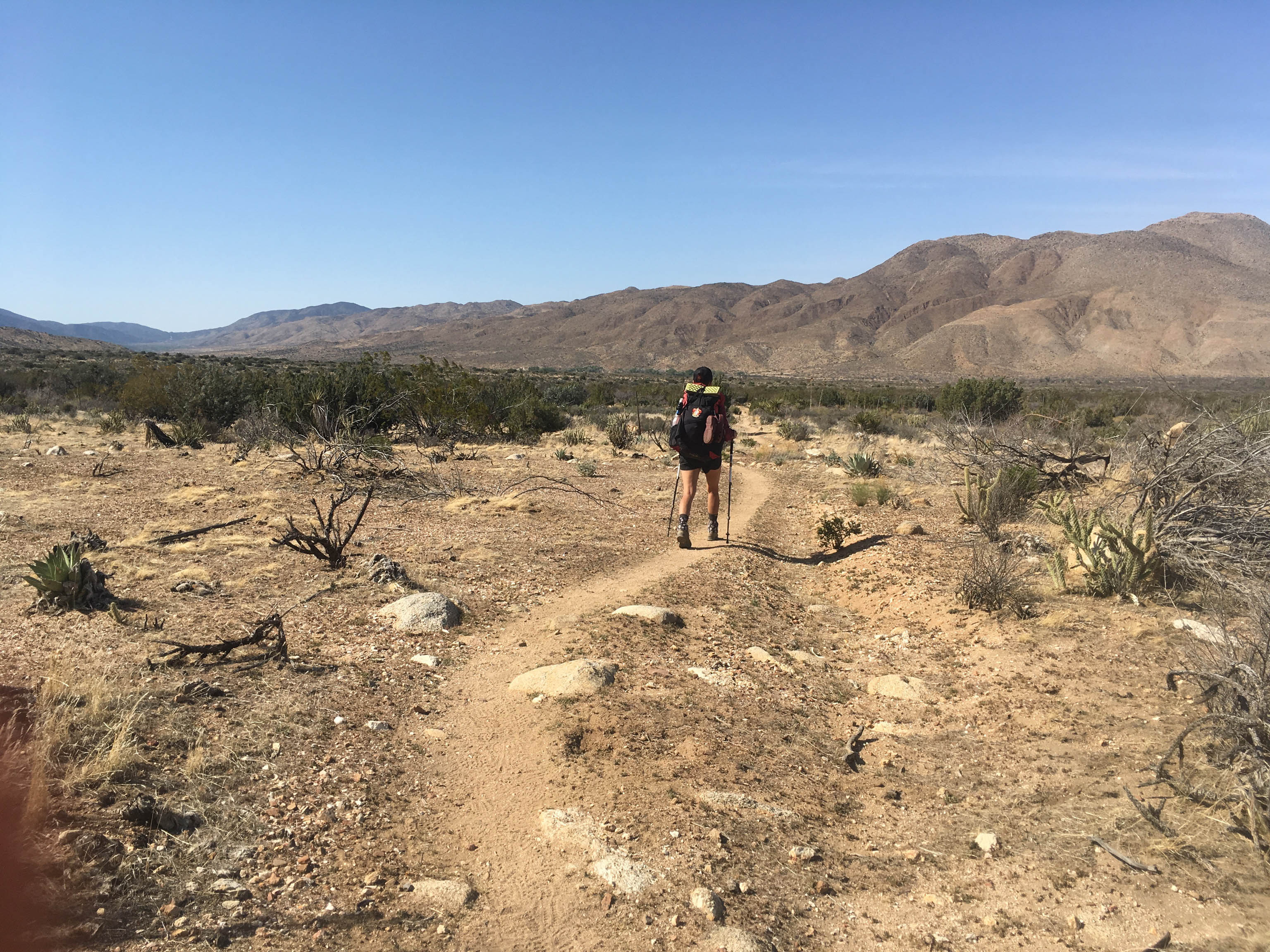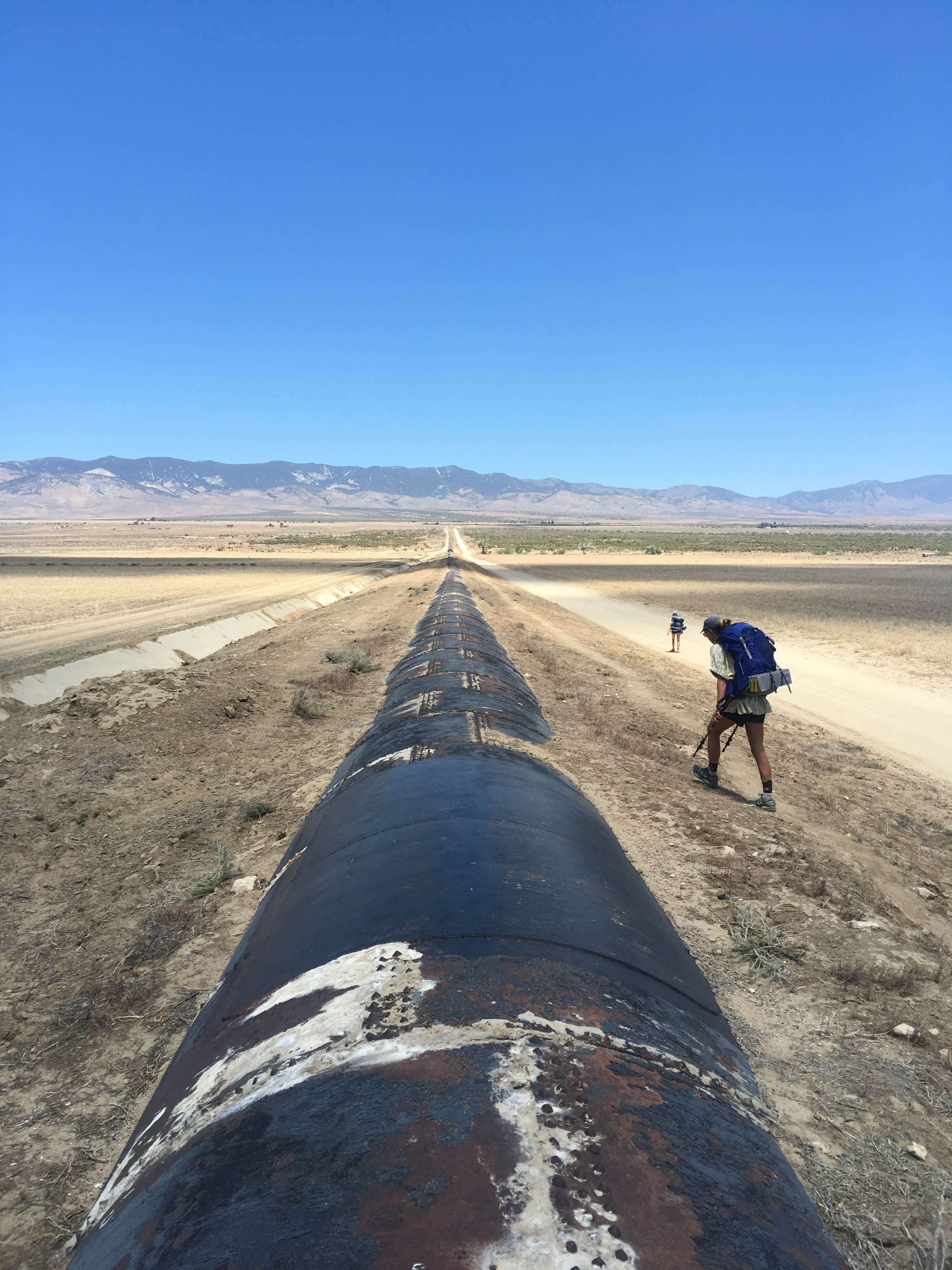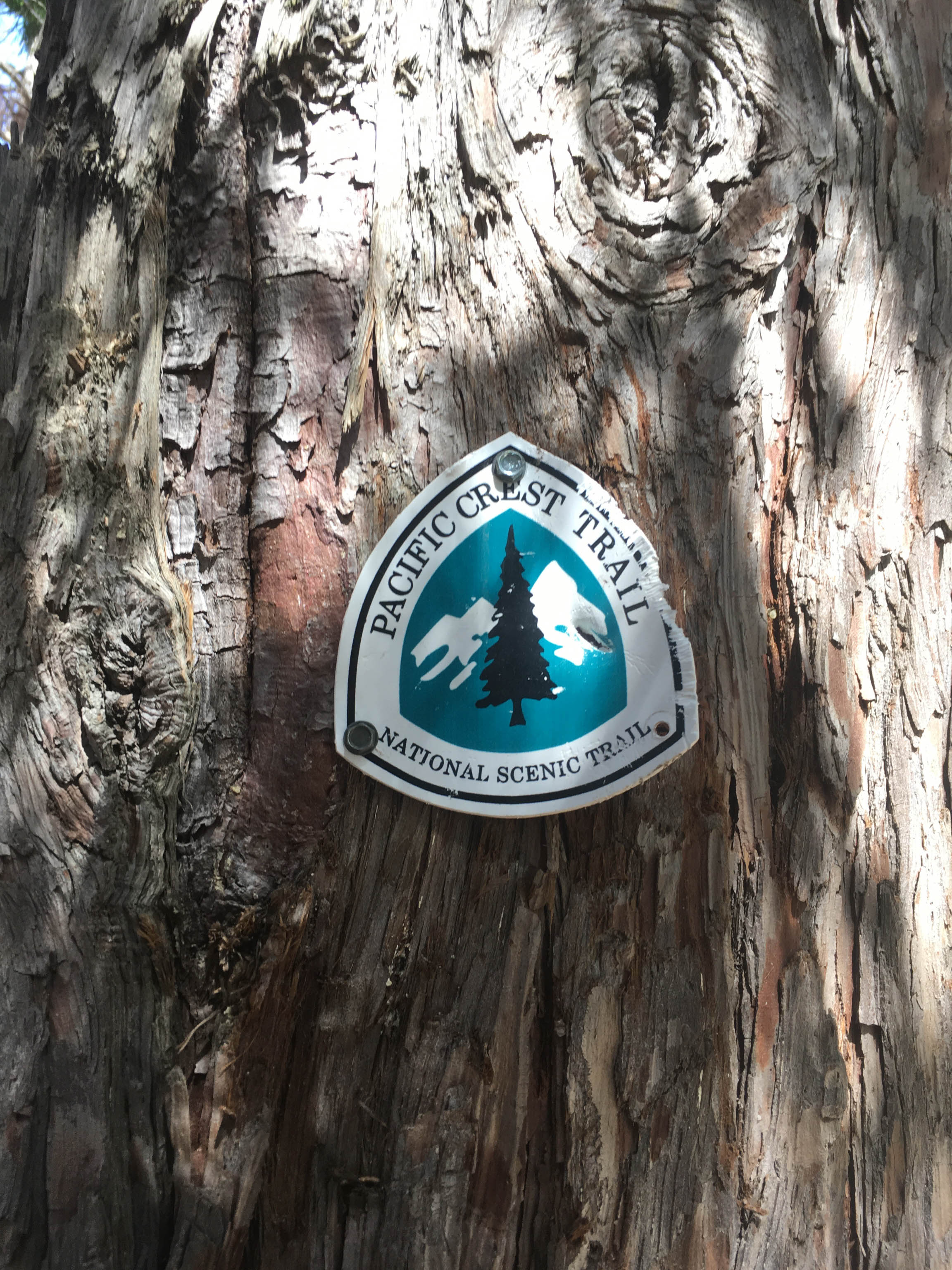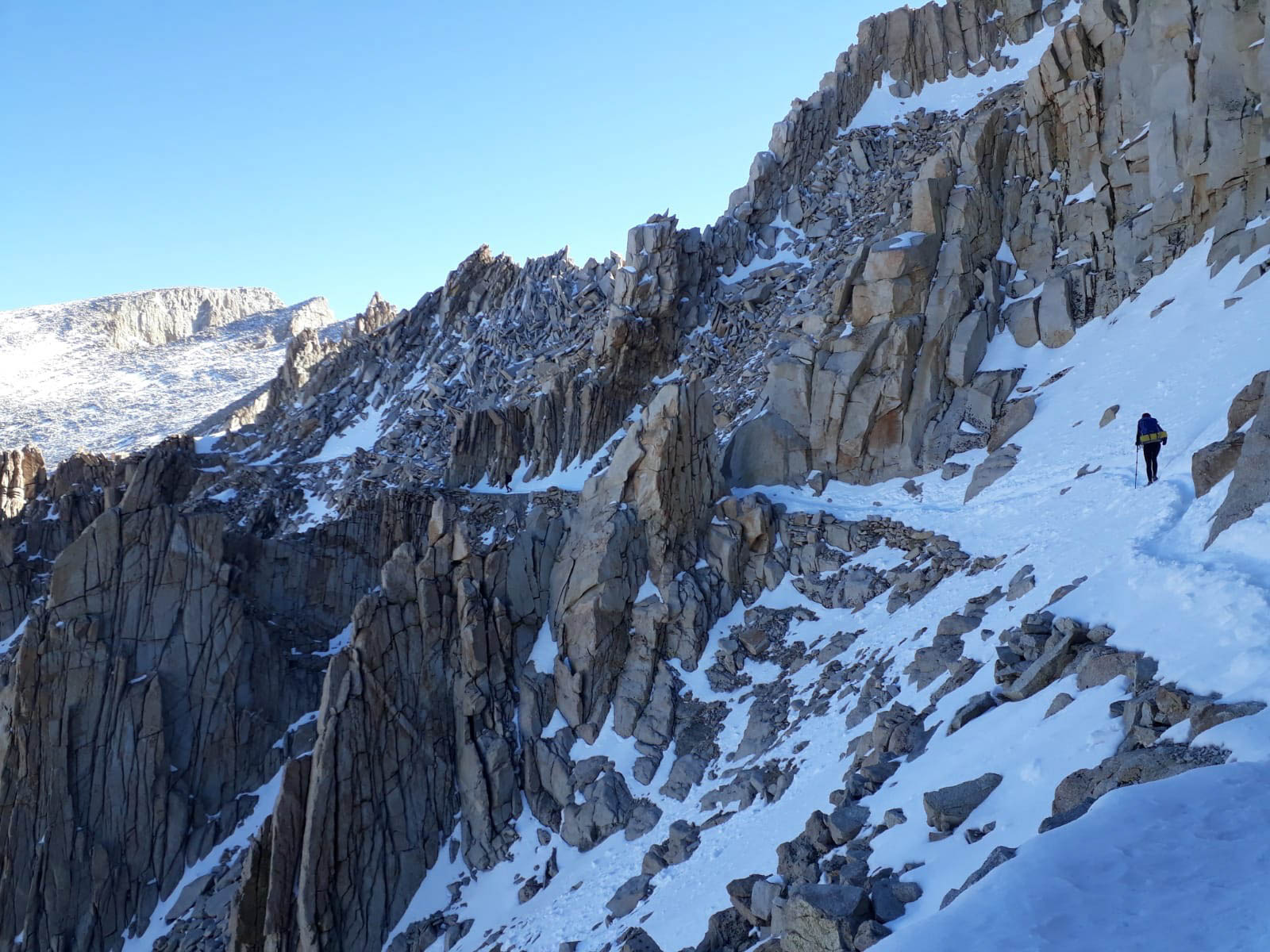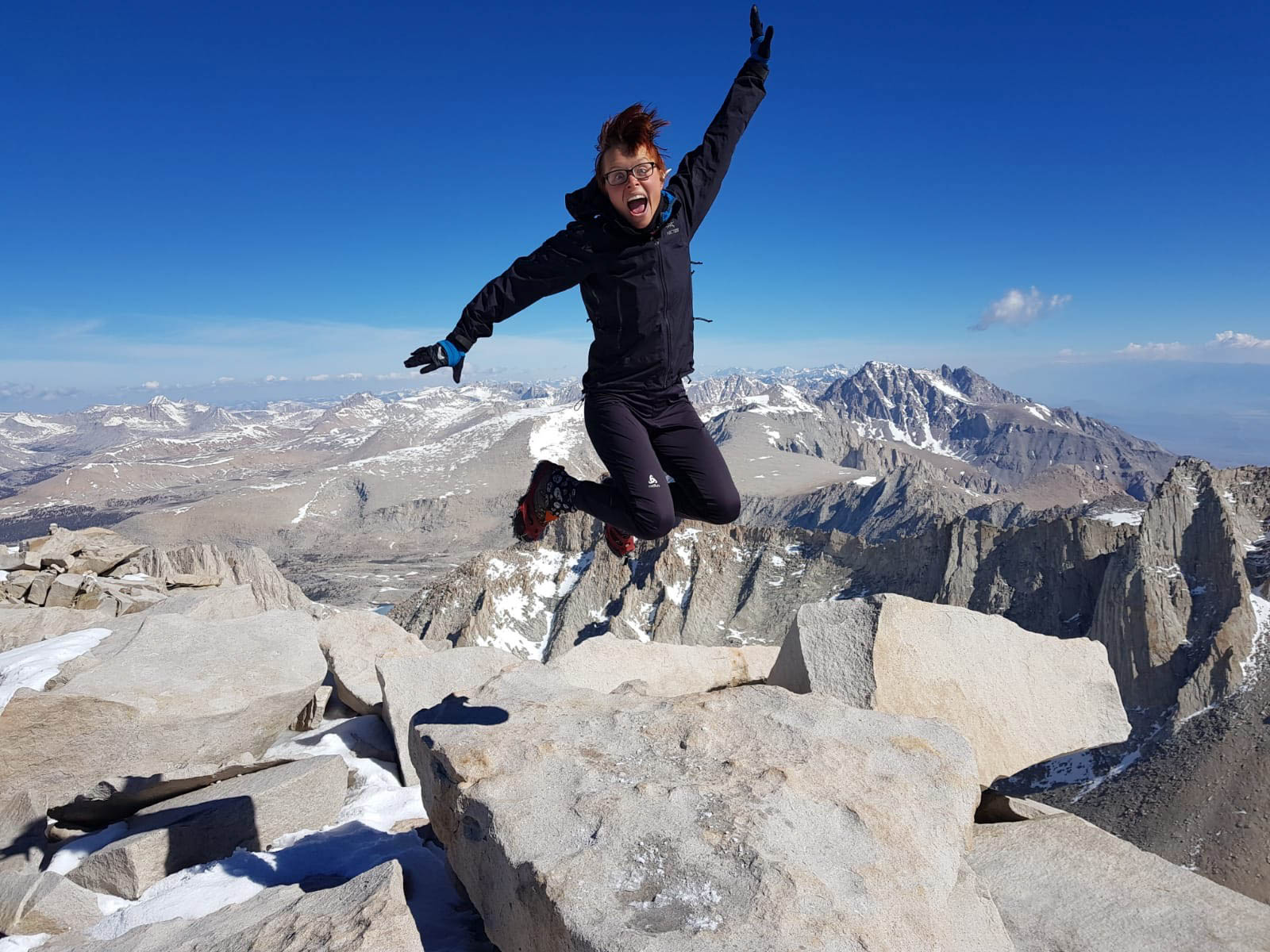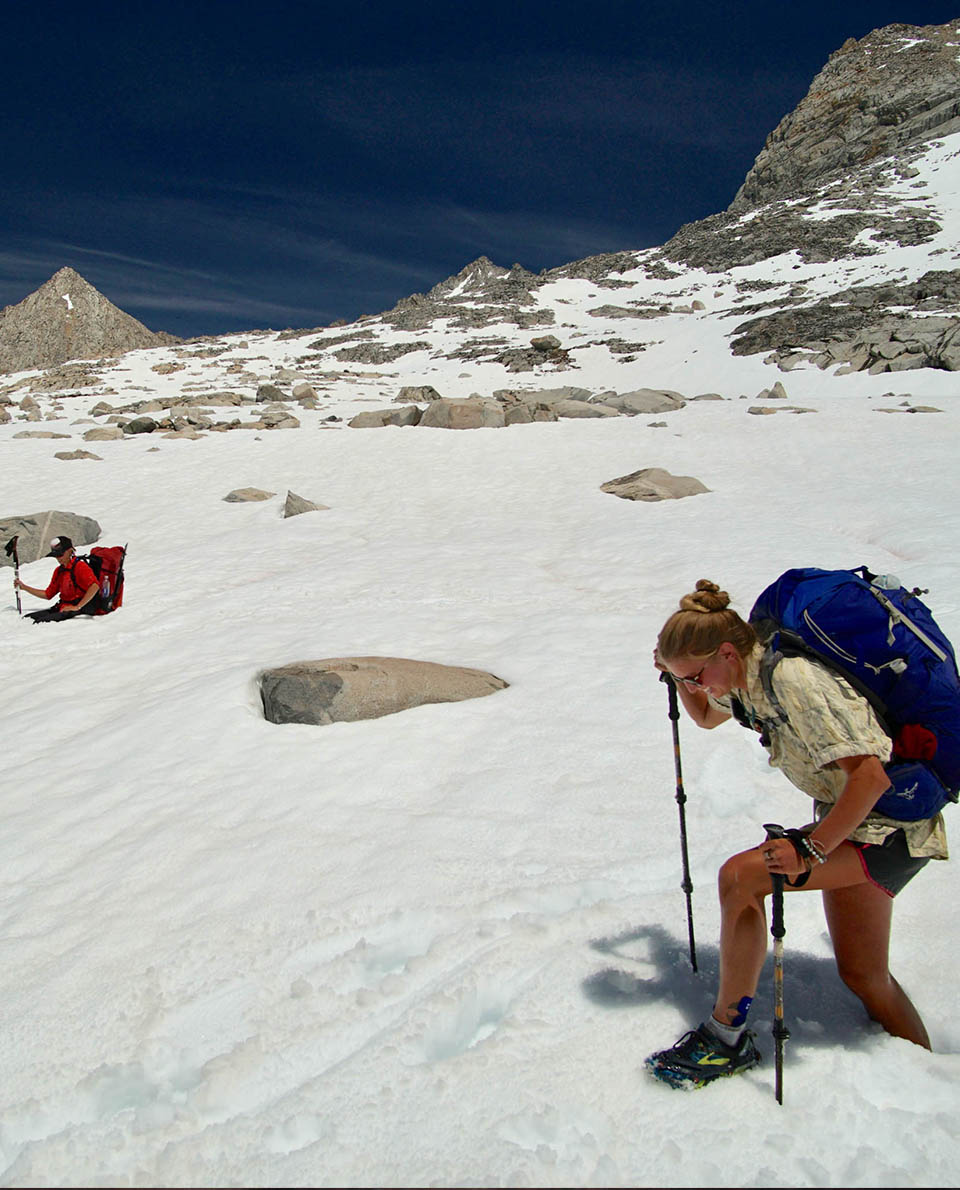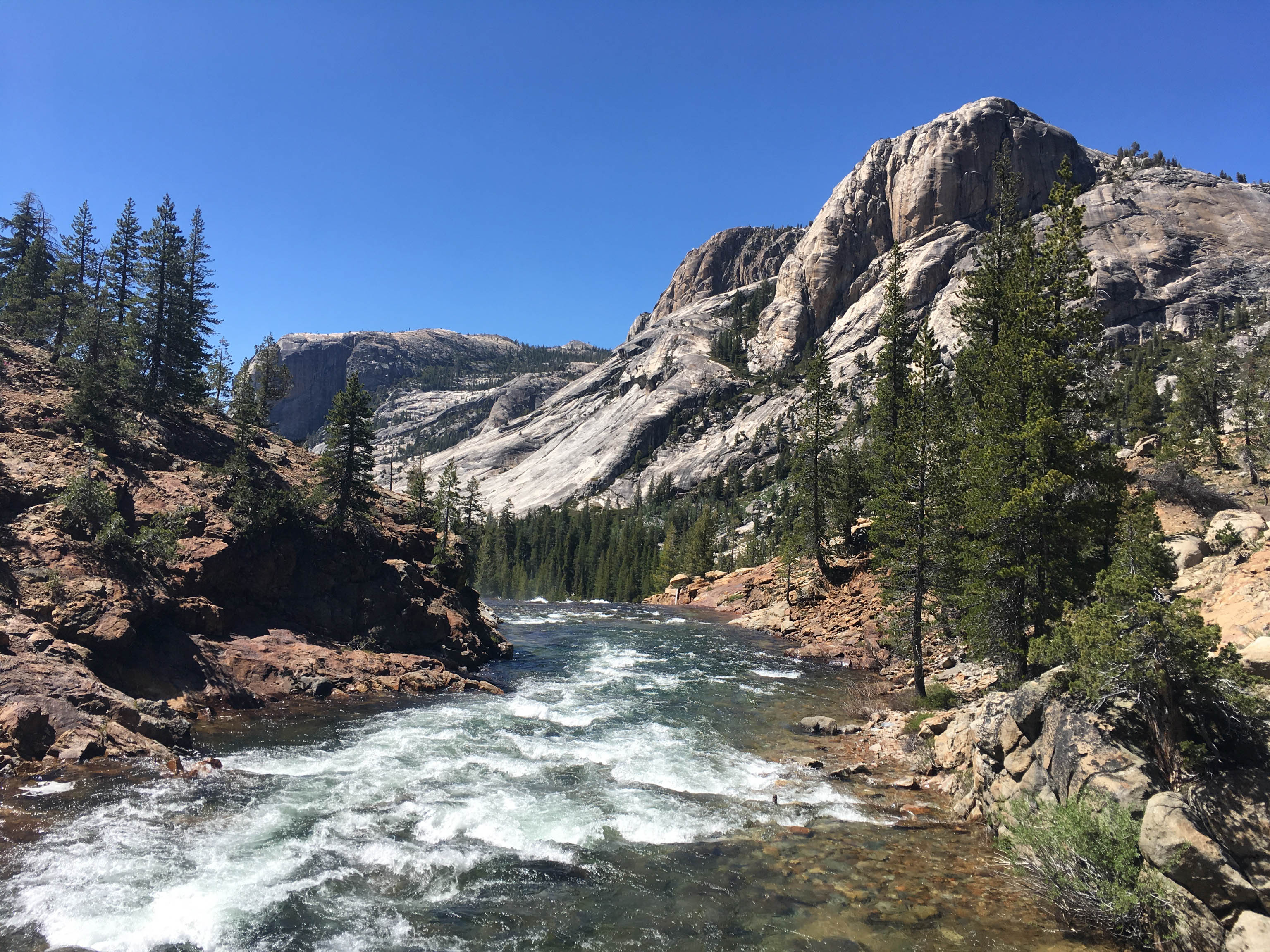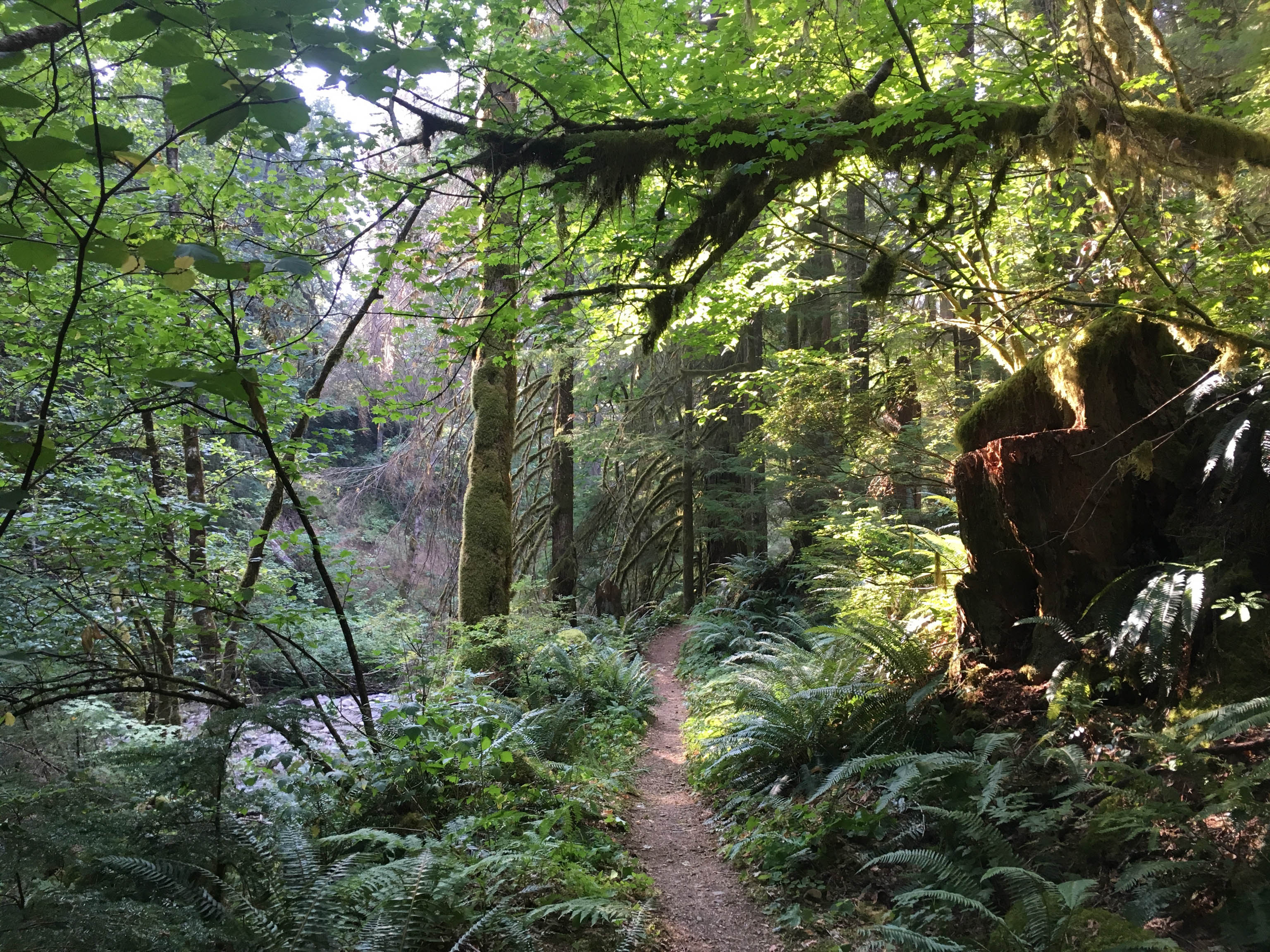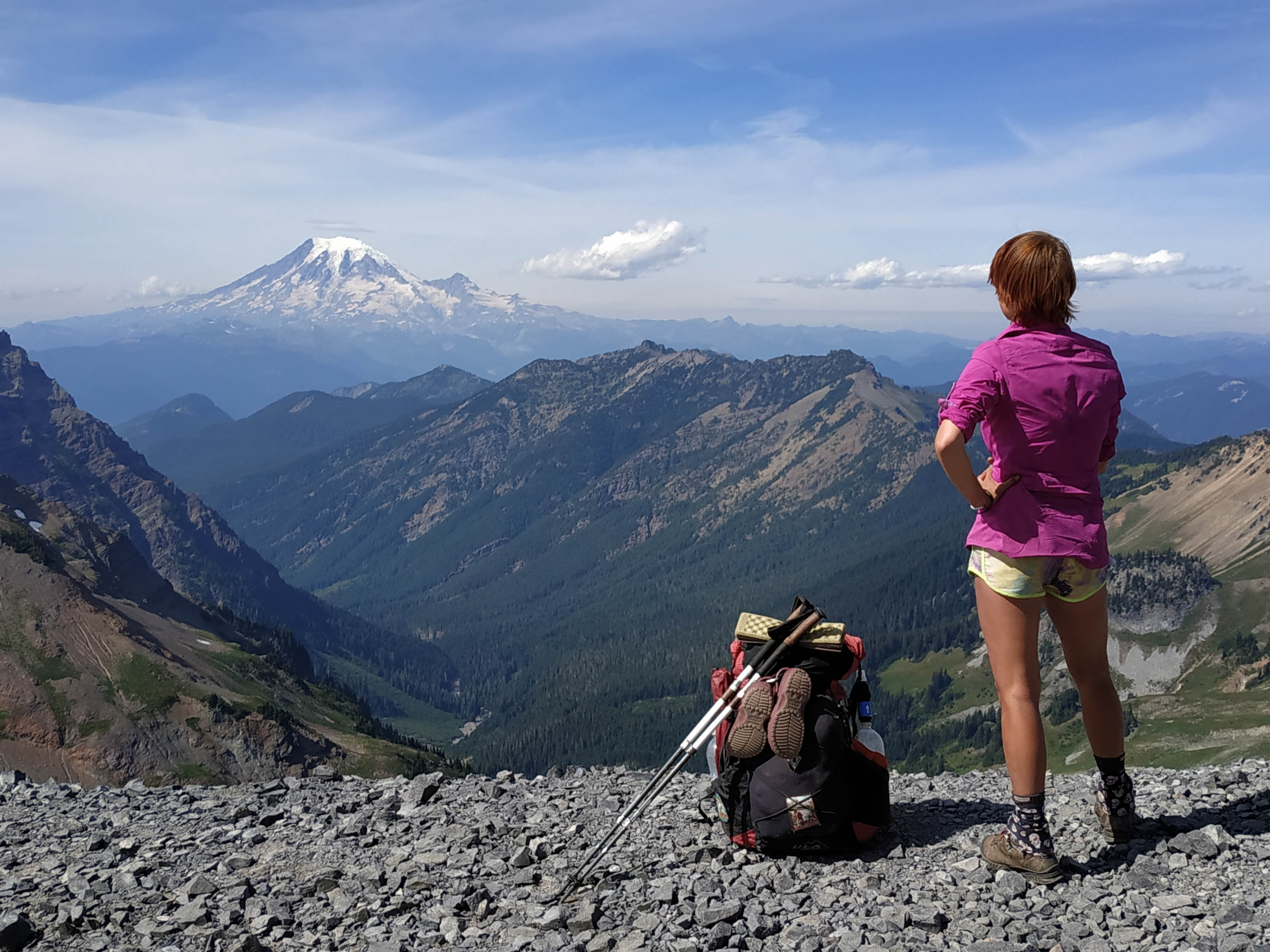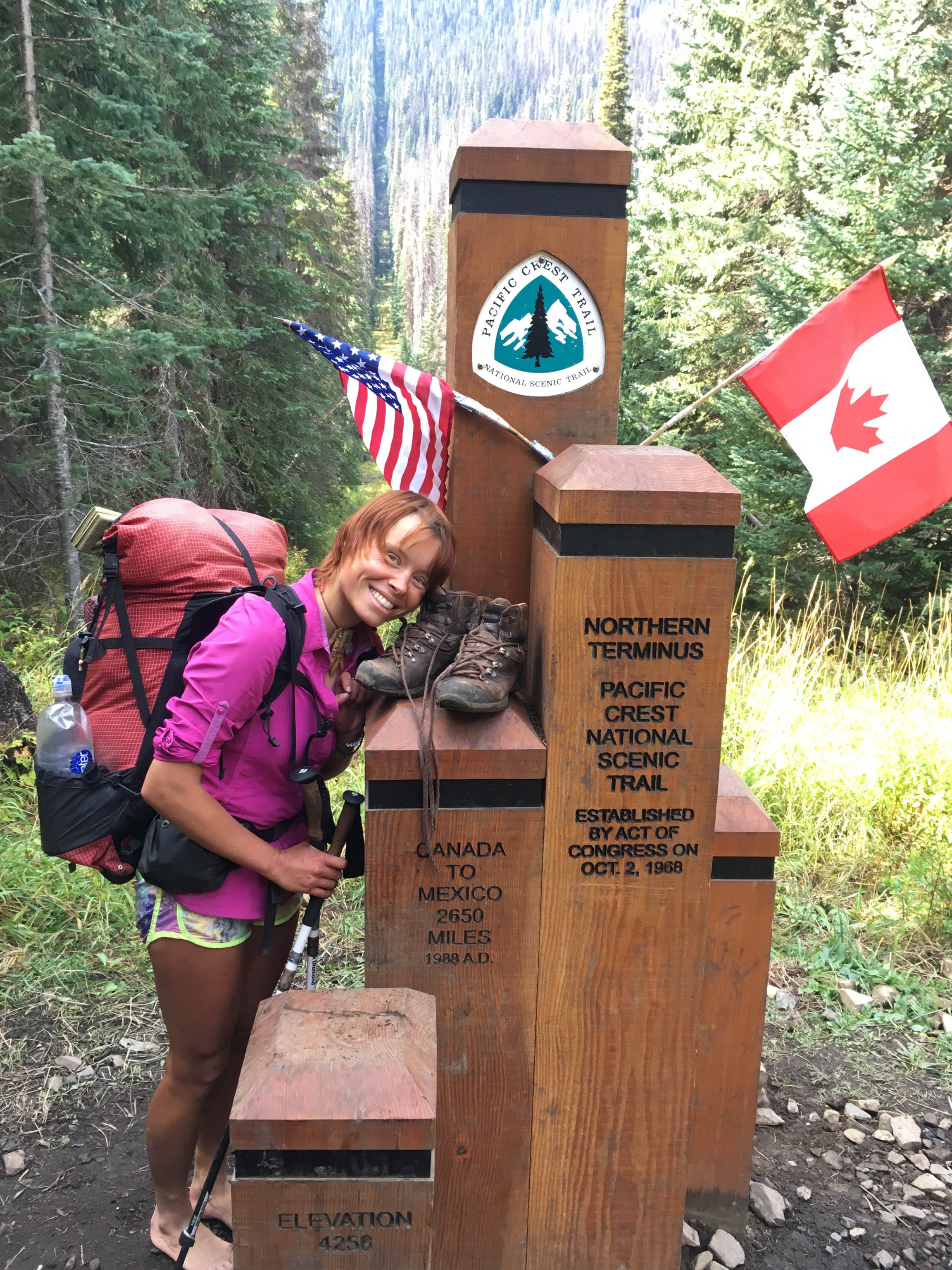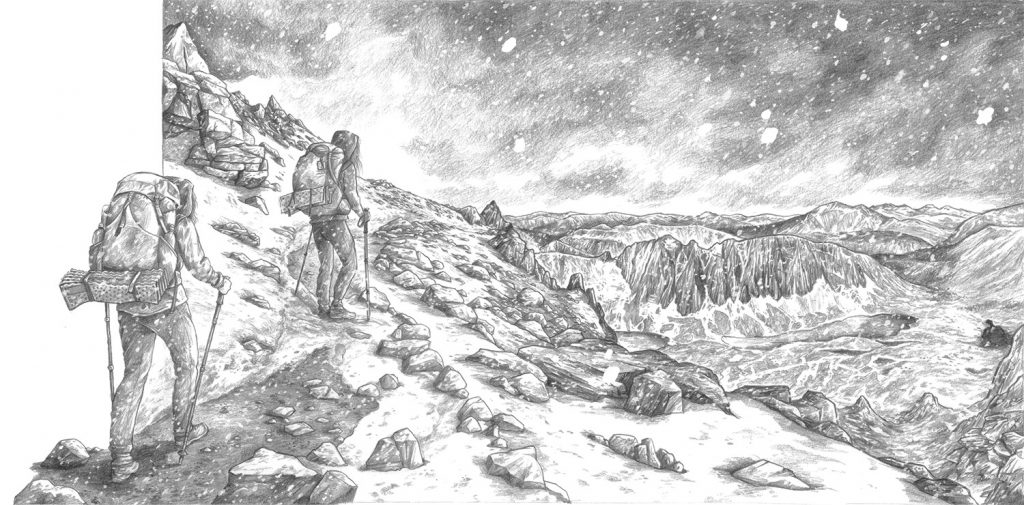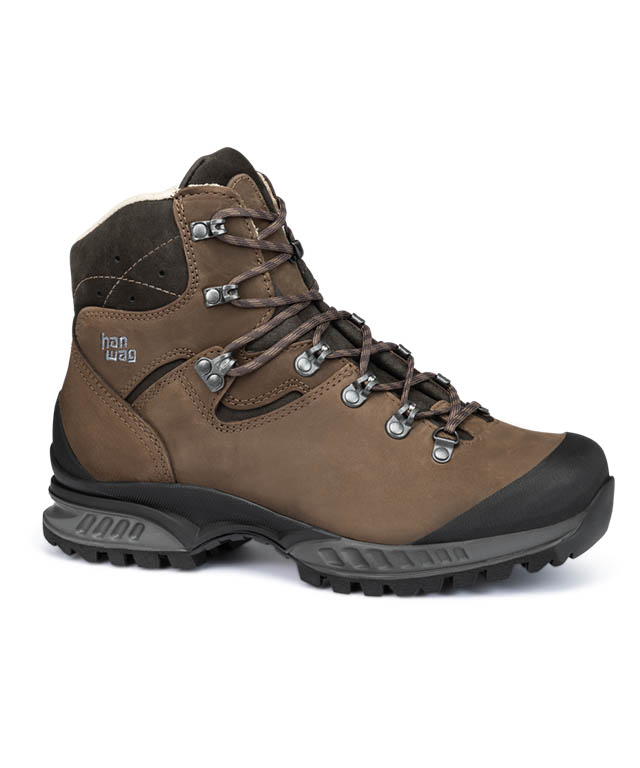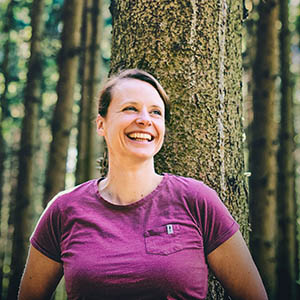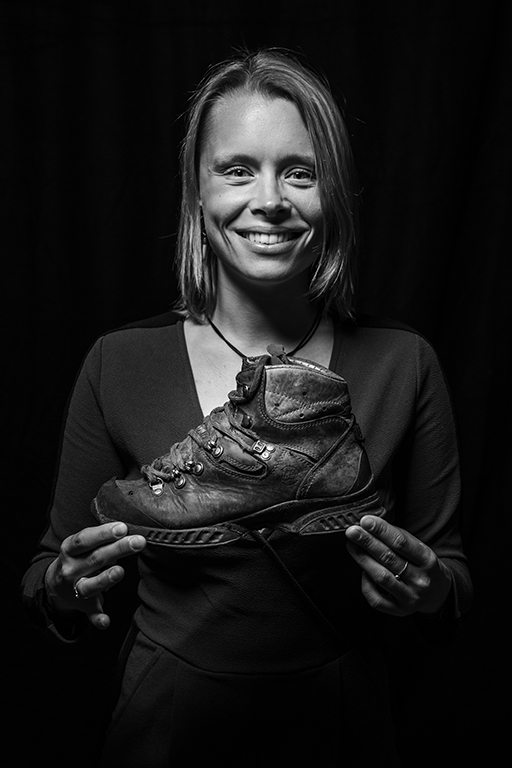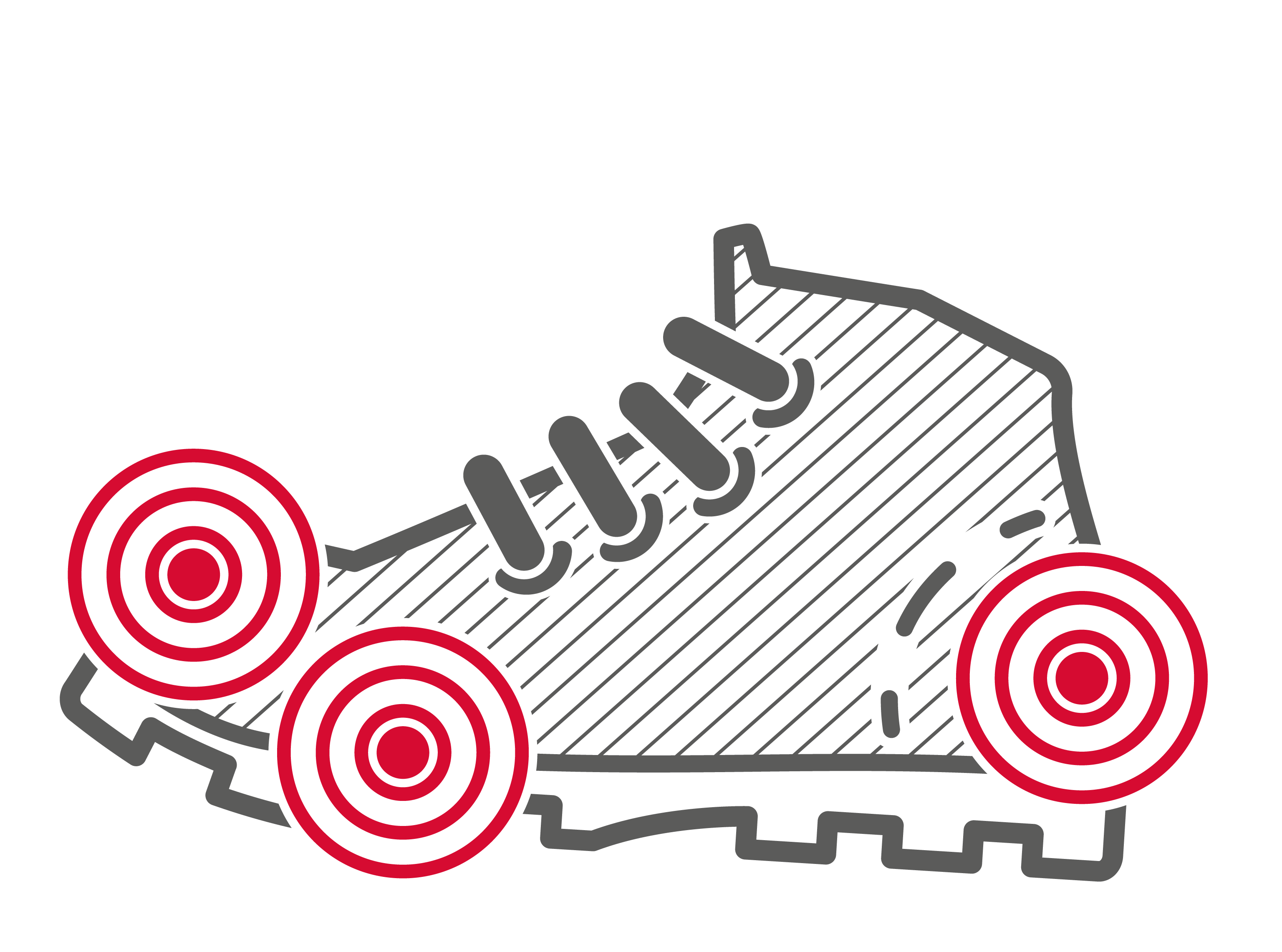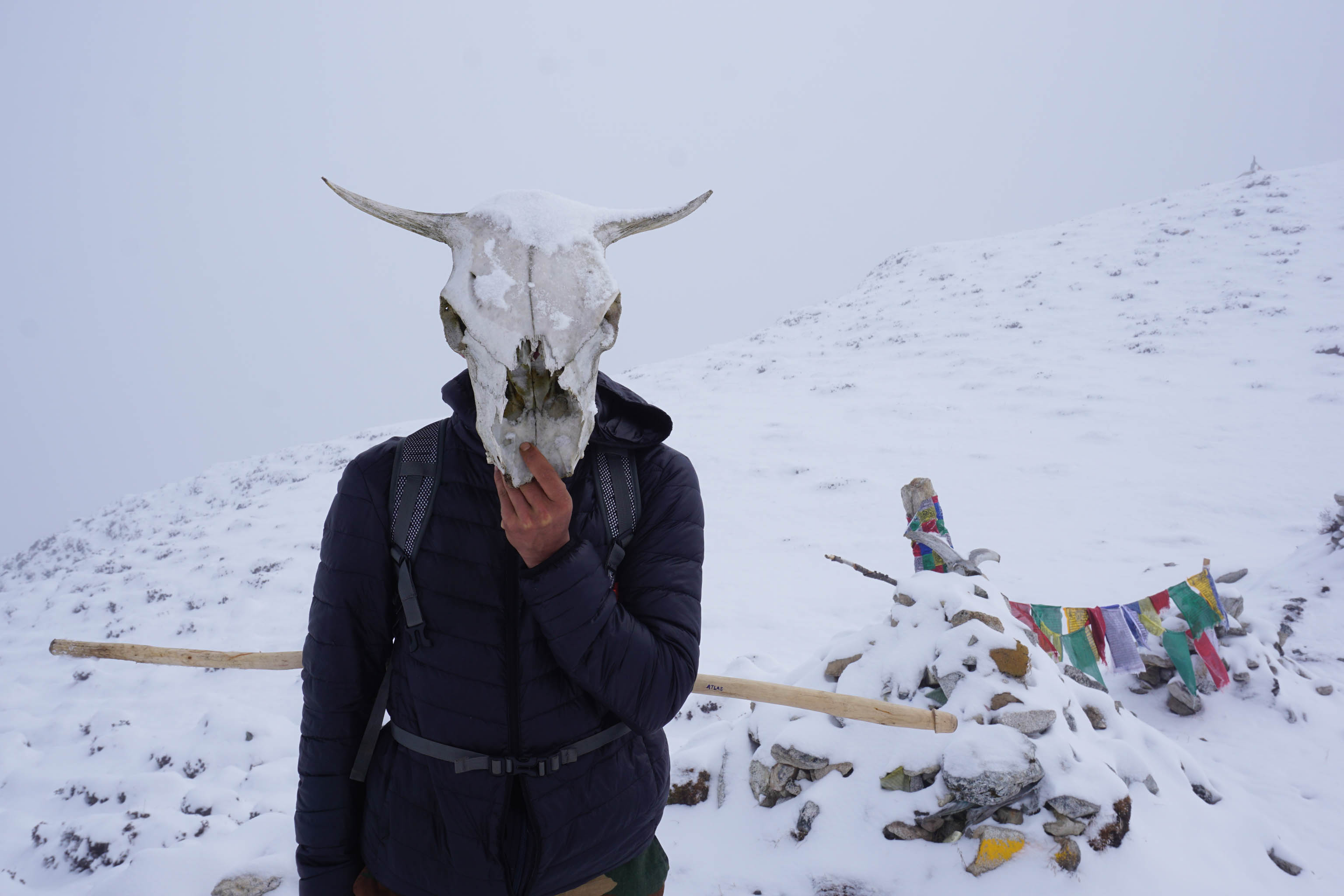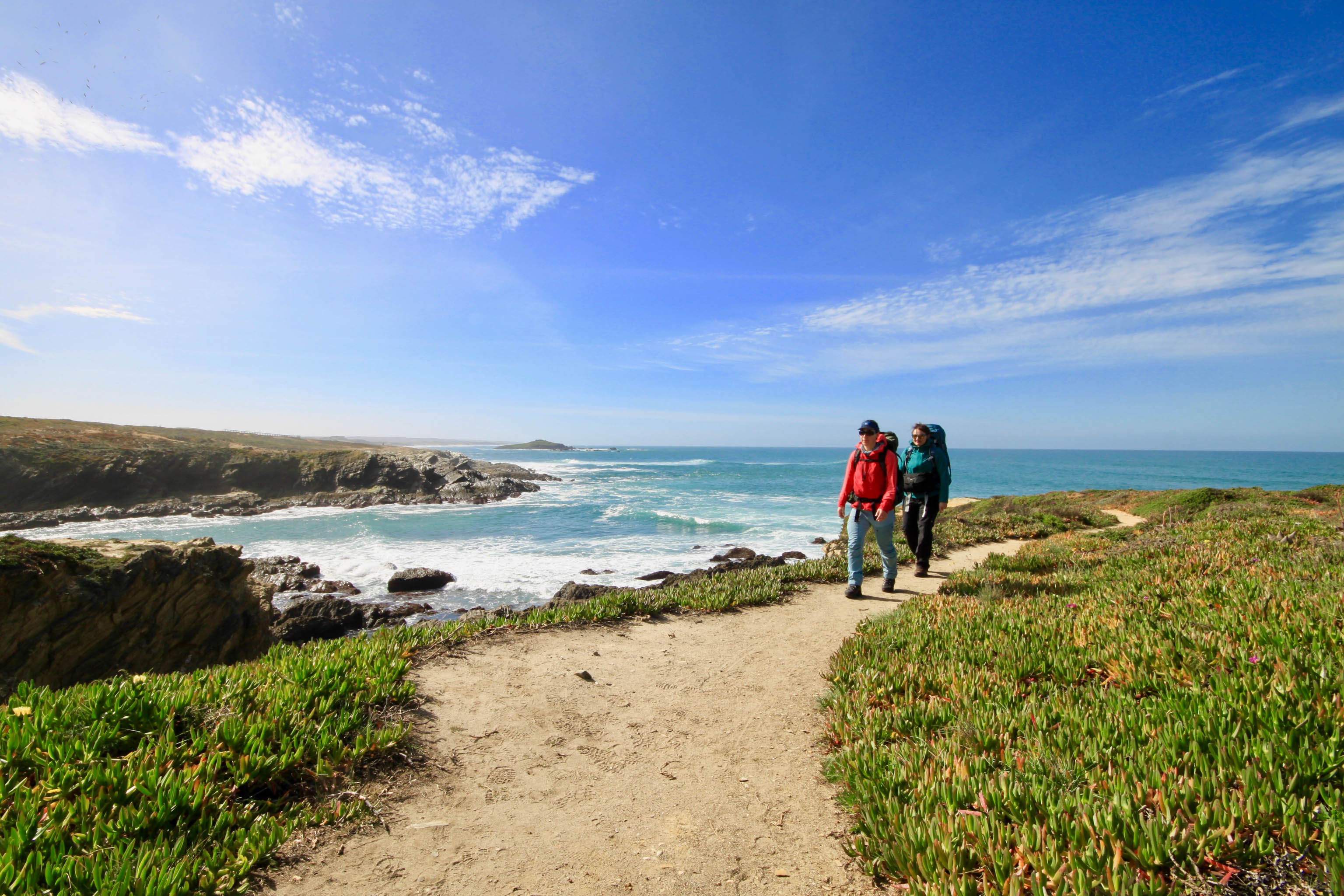Updated on
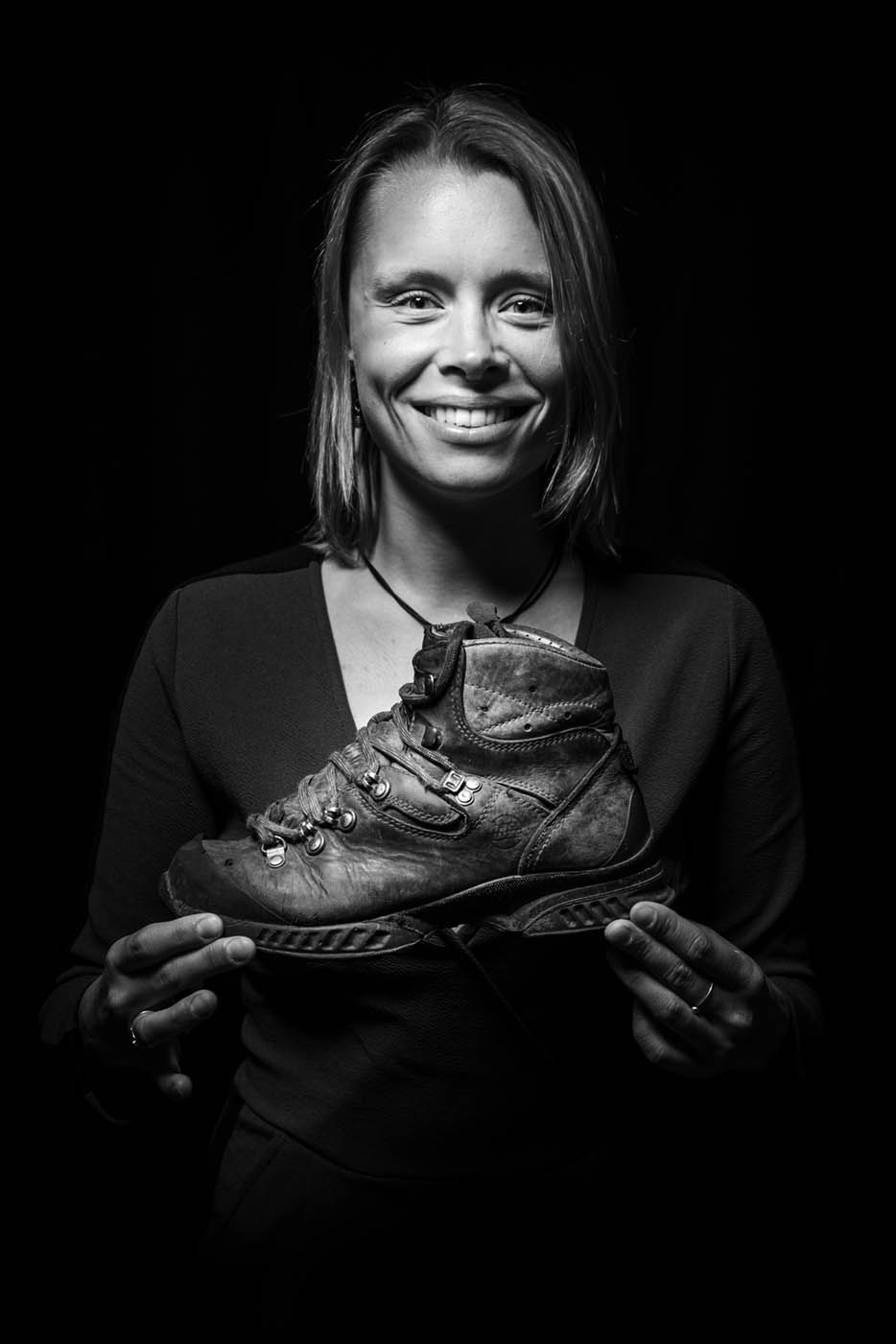
Sanna Wandtke is an illustrator, passionate long-distance hiker and member of the HANWAG Sole People.
4,300 kilometres. 120,000 metres of height gain. 5 months. 1 pair of boots.
The Pacific Crest Trail (PCT) is a long-distance trail that starts in the south-western corner of the United States at the border with Mexico and runs all the way to the border with Canada. It’s an experience that requires both physical and mental endurance. Passing through the states of California, Oregon and Washington, you need determination, an adventurous spirit and the ability to dig deep. “And totally reliable footwear!”
Sanna Wandtke, a young illustrator from Hamburg, didn’t have to think twice about the decision to hike the trail in it’s entire lenght: “When I first read about the trail, my heart started pounding. I was completely engrossed in the stories and books and knew immediately: I want to do it.”
She discovers just what it means to hike through the wilderness day in, day out and to have to rely on your equipment 100%. This is a tale of hot, dusty deserts, wild, raging rivers, sweltering days and frosty nights, rocky cliffs and snowholes.
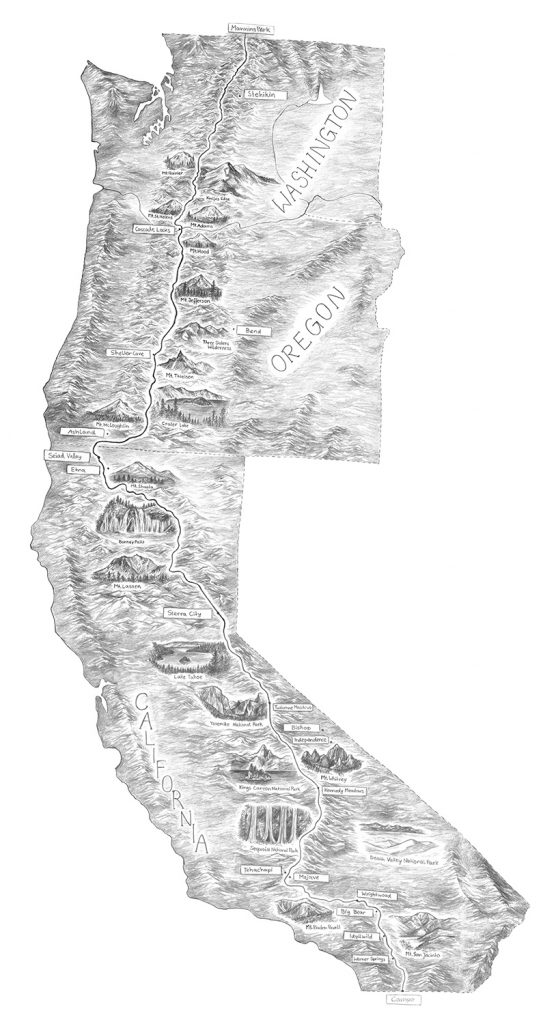
HOTFOOTED
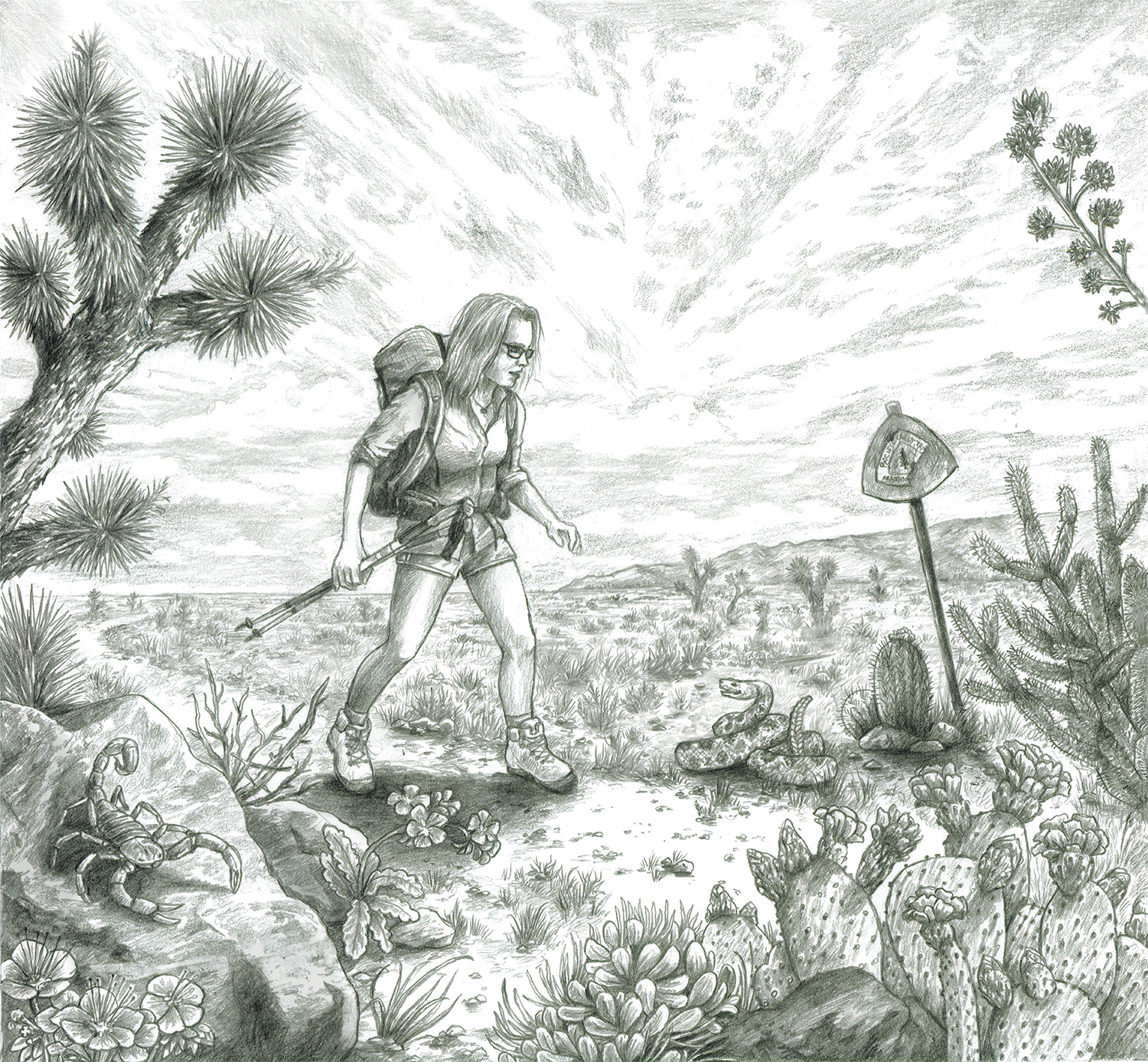
I knew that deserts were supposed to be hot. But not this hot? My first days on the PCT in southern California were sweaty and exhausting. Long days out under the hot, beating sun, carrying a punishing eight kilos of water in my pack with a body that was definitely not yet used to through hiking. Both Sanna and her footwear are pushed to their limits. The dust and the heat get to her and the leather of her HANWAG Tatra trekking boots. “I had to keep stopping to air out my feet to stop the sweaty skin from causing blisters.”
However, as the trail starts to get rougher and rockier, she’s glad of the good grip and secure fit of her sturdy footwear. Her feet slowly start get used to covering some 30 – 40 kilometres a day. All without blisters. She passes through some unbelievably beautiful landscapes. In the summer months, the Mojave Desert can reach up to 45°C, in April while she’s there, it’s in full bloom. Pink, green and yellow flowers cover the cacti, like a still life art installation across the flat desert floor. After a number of days have passed, the hikers on the trail start to settle into a pleasant routine – pitch your tent, cook a meal, sleep, strike camp, pack up, boots on and hike, hike, hike. Walk, eat, sleep, repeat – this is the PCT mantra. Sanna has left civilisation a long way behind – and there are many adventures to come.
-
Sanna's tips for the PCT
Seasons: April and May are the best months to start, so that you can access the High Sierras after the snow has melted. You should plan to finish in the north no later than October, so that you can cross the North Cascades mountains before the first snows arrive there.
Footwear: The extreme variations in terrain on the PCT place huge demands on hiking boots. They need to be sturdy, breathable, as waterproof as possible and very hard wearing. Nobody wants to be stranded in the wilderness with broken boots or painful blisters on their feet – and nor should they be. Many PCT-hikers often end up having to swap boots 5 or 6 times over the course of the 4,300 km route due to wear or holes appearing in them. Not so for Sanna. Why is that? It’s down to the excellent fit, supple and breathable leather, and the sturdy craftsmanship of her lightweight trekking boots HANWAG Tatra II Lady, which make them ideal for mixed terrain, varied temperatures and hard, relentless use. Sanna used the same pair of Tatra boots from the start right through to the finish of the PCT.
Essential equipment: Tent, sleeping bag, camping mat, stove, water filter and backpack – these items are absolutely indispensable. When selecting equipment, try to keep weight in mind. Even if 50-100 grams more doesn’t seem like much on its own, when you add it to the items in the list above, it can make a difference of 2-3 kg. By day two or three in the desert, where you have to carry an additional 2-3 kg of water with you, you’ll certainly be aware of any excess weight on your back.
Bounce Boxes: You can have parcels sent to places along the trail or, in the planning process, coordinate the whole thing so that you can replenish your supplies whenever you need to. ‘Bounce Boxes’, as they are known, can help you access equipment and anything you don’t need earlier on in the trail, by mailing them ahead. And that means you only need to carry items in your pack for the stages of the trail that you really need them for.
AGAINST THE CURRENT
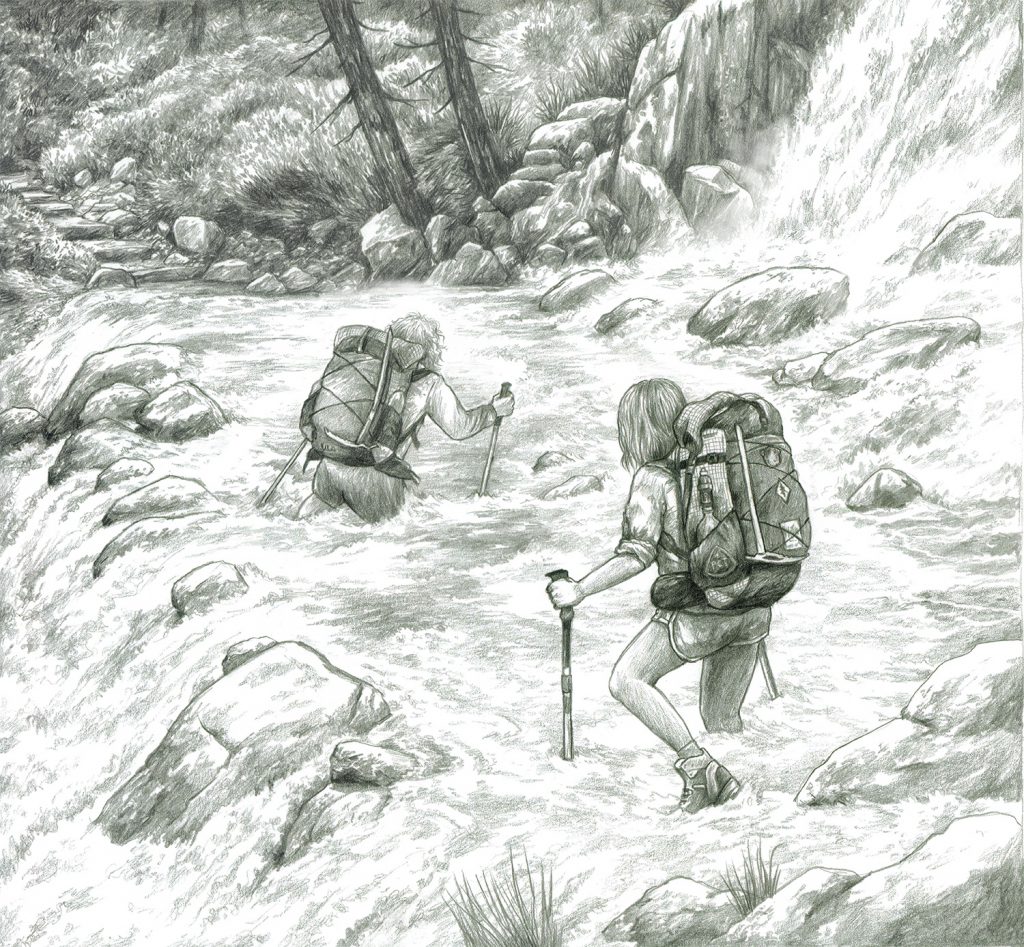
The trail now heads uphill. And them hills are big ones. It’s goodbye to the desert floor and up into the Sierra Nevada. The impressive mountain range has big elevation with snow above 3,000 metres in places even in July. Sanna is not worried about the snow in itself. She’s more concerned about the snowmelt. “The rivers quickly become raging torrents. You definitely do not want to fall in! That could be the end of you. I had to find my own way of getting across them, without getting injured.”
Sanna is in luck though because last winter there was less snow. Both her – and all her equipment – survive the numerous river crossings unscathed. During this section, the young hiker from Hamburg notices how important solidarity is on the PCT. “You shouldn’t really cross these kinds of rivers on your own. Better to do it as a group, so you can help each other, in case something happens.” In this way, Sanna finds her “trail family”. Together, they cross the north Californian wilderness and share experiences that will remain with them for the rest of their lives.
FIND OUT MORE ABOUT SANNA? THEN READ HER PORTRAIT AT THE HANWAG SOLE PEOPLE
THAT SINKING FEELING
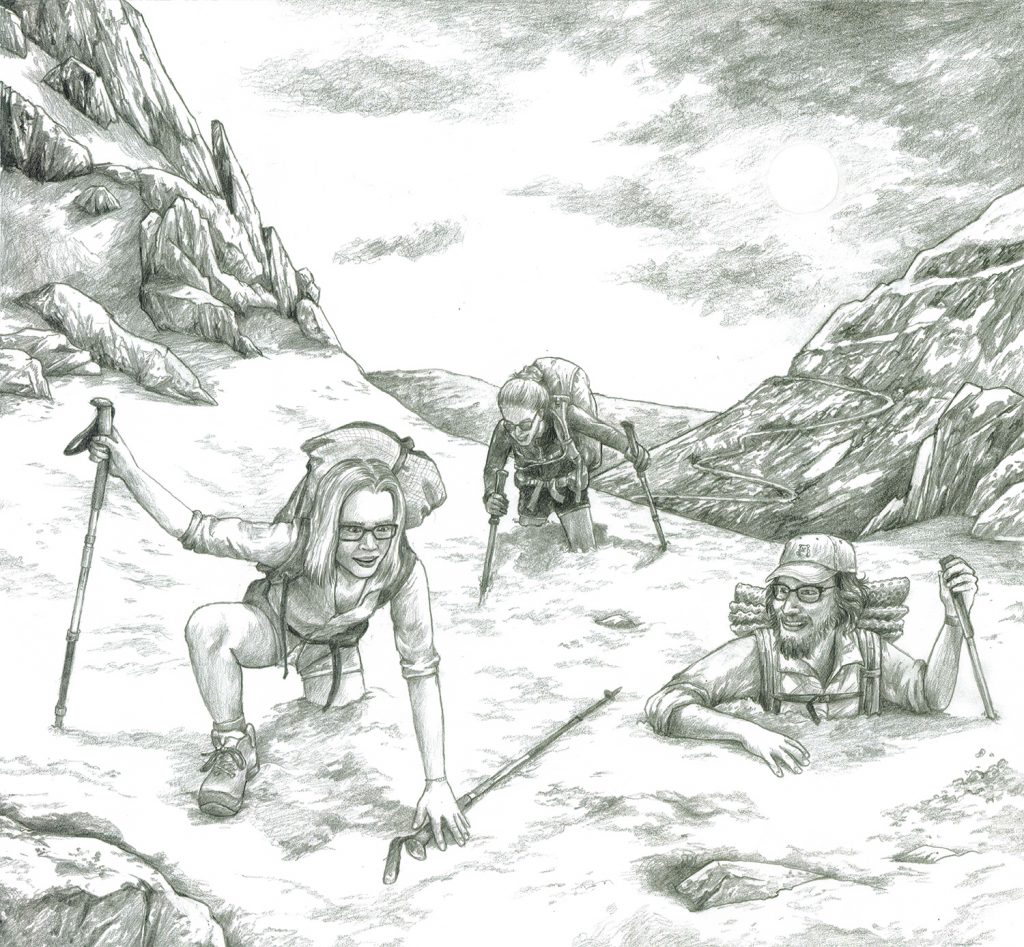
The Sierra Nevada, the high mountain range in California has many passes over 4,000 metres in elevation that can still be covered in snow in early summer. “We used to get up very early on this section. Sometimes it was 3:30 a.m! This is because the snow cover is still frozen early in the morning and you can make pretty good progress with spikes on your boots.” Sanna found out the hard way what happens when you set out too late. The Americans call it ‘postholing’. “If you get up too late, the sun softens the snow and you sometimes sink in right up to your waist!”
It’s at times like these that she’s glad of her sturdy, leather boots. “They might have been a bit cold when I came out of the tent and pulled them on first thing in the morning, but they soon warmed up.” She says that she never really got cold feet, unlike many of the other hikers who chose to wear lightweight trail running shoes, where cold winds would blow through the airy material all day. Once the tough kilometres throw the snow and ice are behind her, Oregon beckons with its unique, wild flora and fauna.
WHEREVER I PITCH MY TENT IS MY HOME
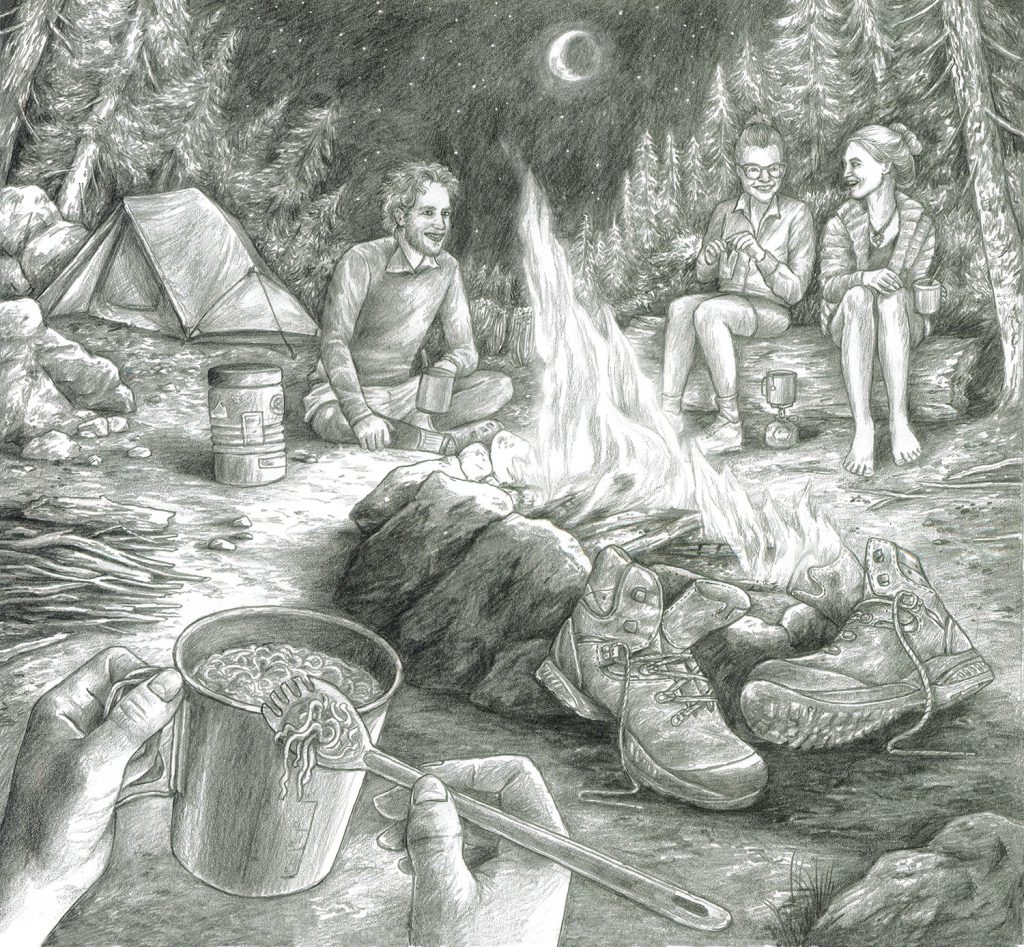
It’s a great feeling, pitching your tent in a beautiful spot in the woods after a hard day’s hike and enjoying the warmth of a camp fire. There are plenty of idyllic places to camp in the mountains and forests of Oregon. “Groups often form along the way. Most people start out on the PCT on their own. Many of them have issues that they want to come to terms with, such as a death in the family or relationship problems. The shared experiences you go through bond you together like a kind of family. My trail family.”
The warm fire crackling, a hot bowl of Ramen noodles, interesting conversations …
What’s that smell? Damn it. My boots! They were too near to the fire and the leather got singed. Sanna still fumes when she thinks of her rash attempt to dry her boots. Luckily the soles were not affected and they fit fine the following day. “Again, I was glad to be wearing such solid boots as my Tatras. They can even withstand nearly being sacrificed on the camp fire!” Goodbye Oregon, hello …
BITTERSWEET FINALE
The last stage of the trail runs through Washington State. After months hiking through woods and deserts, it’s back up into the mountains again. Sanna’s journey takes her into the Northern Cascades, a striking mountain range including volcanic peaks that look similar to the Swiss Alps. “In the beginning, I thought it was nature that had attracted me to the PCT. During the trek, I realised at some point that it was the people I had met on the way who I would remember for the rest of my life.”
Over the final stretches – shortly before the border with Canada – Sanna has plenty of time to reflect. After covering nearly 4,300 kilometres on foot, she sees that she has reached emotional calm and peace of mind and recognises that you don’t need much in life to be happy. Warmth, protection, food, good friends – and of course comfortable, reliable footwear. She wore her boots for 169 days before reaching her final goal in Manning Park Canada on 22 September.
The trail provides – seek and you shall find.
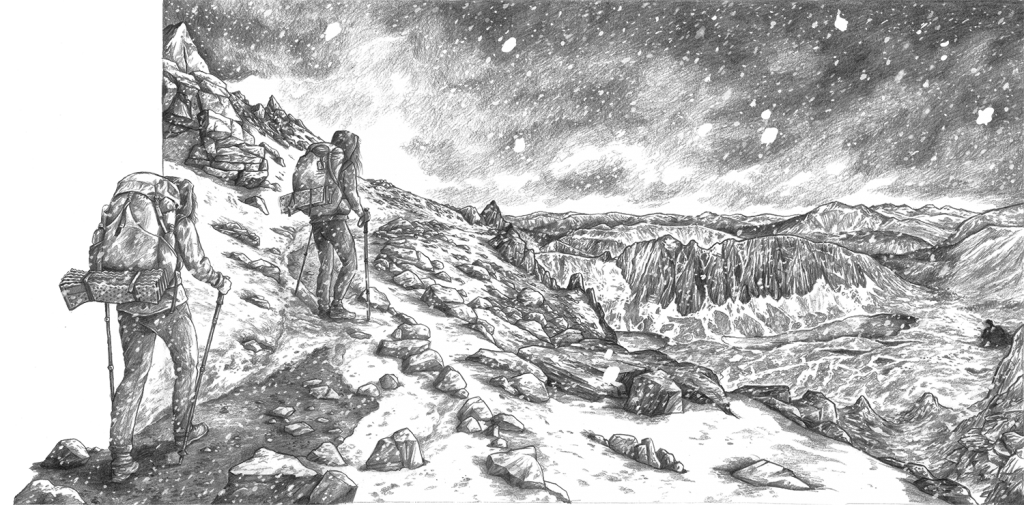
Take a look at Sanna's photo diary
